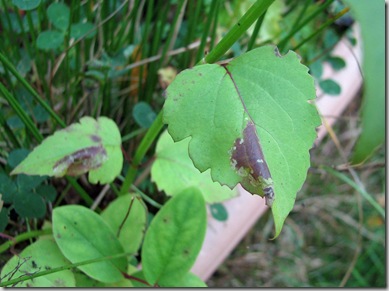The striped gold midget
Some dark blotches on several of the leaves of the Himalayan honeysuckle (Leycesteria formosa) have proved to be the upper side of the leaf mine of the striped gold midget (Phyllonorycter emberizaepenella).
'Phyllonorycter' means 'leaf-digger' and 'emberizaepenella' 'bunting-winged' so the vernacular name should, perhaps be 'bunting- winged leaf-digger'. But there are some further complexities with this wonderfully Ciceronian scientific name: the second half of the specific name derives from Latin penna meaning a wing. This would give two n's in emberizaepenella and the fact that there is only one is said to be a typographical error. Unless a properly recorded earlier version of the specific name of this moth is found the misspelt version has to remain under the international rules of nomenclature.
The moth is said to widespread but very local and the larvae feed also on honeysuckles and snowberry. There are no records for the species in East Sussex in the Sussex Biodiversity Record Centre's database. There is however a dot for East Sussex in The moths and butterflies of Great Britain and Ireland, so it must have been found. It is, however, listed by the Record Centre as occurring at Ebernoe Common, West Sussex.




No comments:
Post a Comment